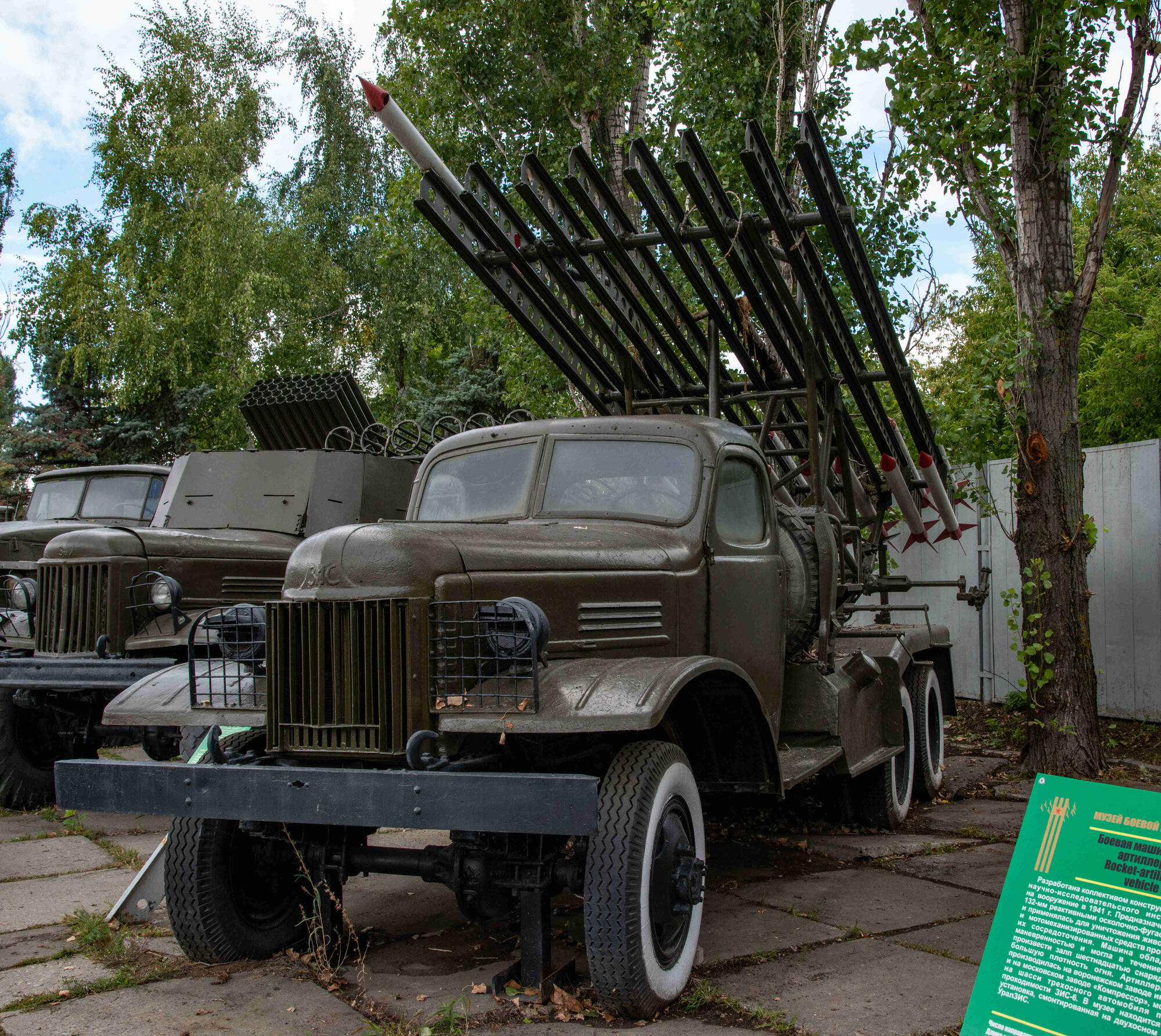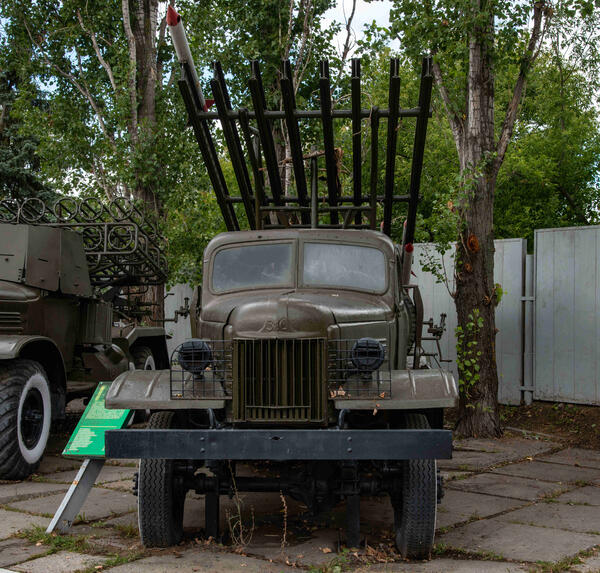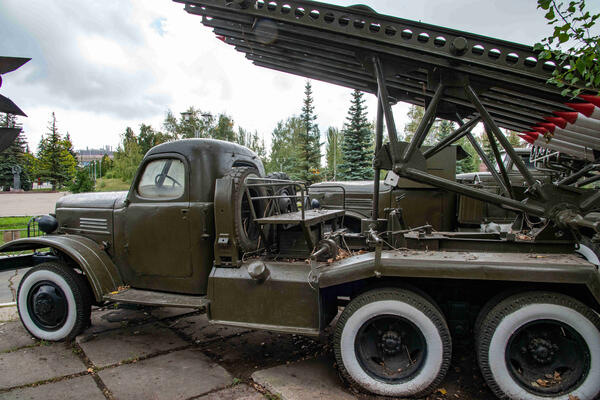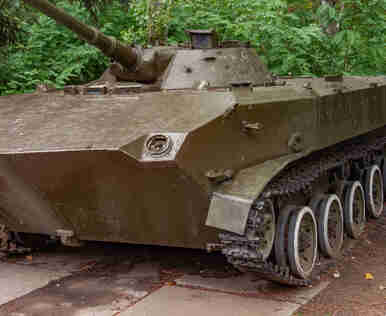The BM-13N rocket artillery combat vehicle was developed as a result of a redesign and standardization of the components and parts of the BM-13 rocket launcher, mainly known as “Katyusha”. The letter “N” means “standardized”. The vehicle entered service in 1943.
Design-wise, a subframe was added to the launcher, on which the artillery system was fitted. This feature made it easy to mount the launcher on the chassis of any truck. The cost of the launcher was reduced, while labor intensity and time of production were improved.
Near the seat of the combat vehicle’s commander, a device was mounted on the front panel, which was called the “assault fire command console”. A wiring harness connected it with a special battery and each launch array.
The introduction of an armored fuel tank, a gas pipe, side and rear walls of the driver’s cabin improved the launchers’ survivability in action. The angle of firing was widened and the stability of the vehicle on the move was increased.
Modernized lifting and steering mechanisms improved targeting. Like the BM-13, the BM-13N combat vehicle could fire M-13 rockets. M-20 high-explosive rockets were also used. Those entered service in June 1942. The BM-13N launchers were reequipped with a new chassis which significantly increased the tactical mobility of the rocket artillery units.
A powerful American “Studebaker US” (6×6) three-axle all-wheel drive truck was used as the main platform for this combat vehicle. The trucks were exported to the USSR under Lend-Lease, the US state program.
The Studebaker US had increased cross-country mobility, a powerful engine, an auxiliary gear transmission, a self-rescue winch and high ground clearance. In April 1944, new M-13UK 132mm rockets with improved accuracy and a firing range of 7900 m were designed for the BM-13.
The accuracy of rockets was increased by three times. From that moment, instead of a regimental or brigade salvo, it was enough to fire only divisional salvo, as its power also was increased. This feature made it possible to fire at targets that were in the vicinity of one’s own troops.
The latter ensured that the time interval between the impact of shells on the enemy before a tank and infantry assault and the attack itself was sharply reduced. In the postwar period, the BM-13N was mounted on the ZIS-151 truck.
Design-wise, a subframe was added to the launcher, on which the artillery system was fitted. This feature made it easy to mount the launcher on the chassis of any truck. The cost of the launcher was reduced, while labor intensity and time of production were improved.
Near the seat of the combat vehicle’s commander, a device was mounted on the front panel, which was called the “assault fire command console”. A wiring harness connected it with a special battery and each launch array.
The introduction of an armored fuel tank, a gas pipe, side and rear walls of the driver’s cabin improved the launchers’ survivability in action. The angle of firing was widened and the stability of the vehicle on the move was increased.
Modernized lifting and steering mechanisms improved targeting. Like the BM-13, the BM-13N combat vehicle could fire M-13 rockets. M-20 high-explosive rockets were also used. Those entered service in June 1942. The BM-13N launchers were reequipped with a new chassis which significantly increased the tactical mobility of the rocket artillery units.
A powerful American “Studebaker US” (6×6) three-axle all-wheel drive truck was used as the main platform for this combat vehicle. The trucks were exported to the USSR under Lend-Lease, the US state program.
The Studebaker US had increased cross-country mobility, a powerful engine, an auxiliary gear transmission, a self-rescue winch and high ground clearance. In April 1944, new M-13UK 132mm rockets with improved accuracy and a firing range of 7900 m were designed for the BM-13.
The accuracy of rockets was increased by three times. From that moment, instead of a regimental or brigade salvo, it was enough to fire only divisional salvo, as its power also was increased. This feature made it possible to fire at targets that were in the vicinity of one’s own troops.
The latter ensured that the time interval between the impact of shells on the enemy before a tank and infantry assault and the attack itself was sharply reduced. In the postwar period, the BM-13N was mounted on the ZIS-151 truck.




